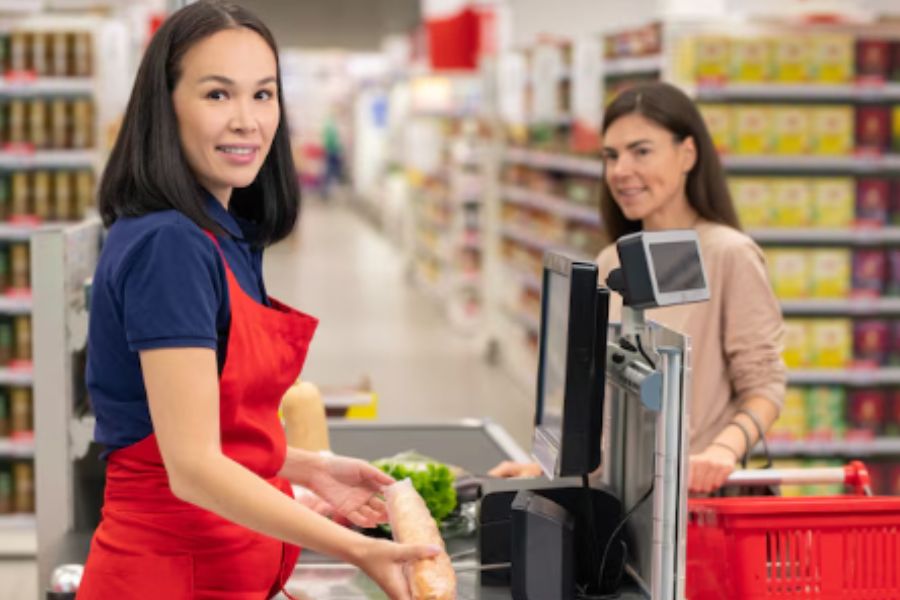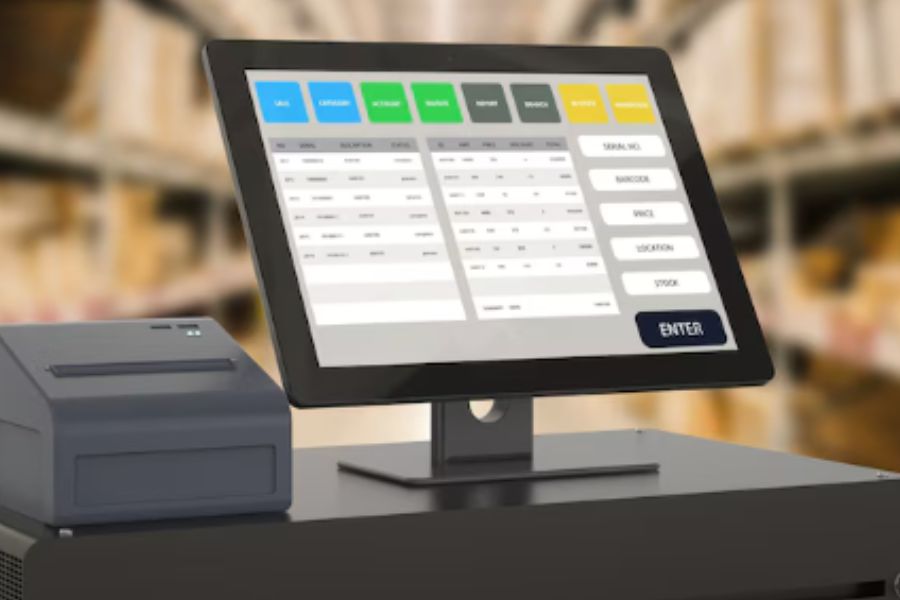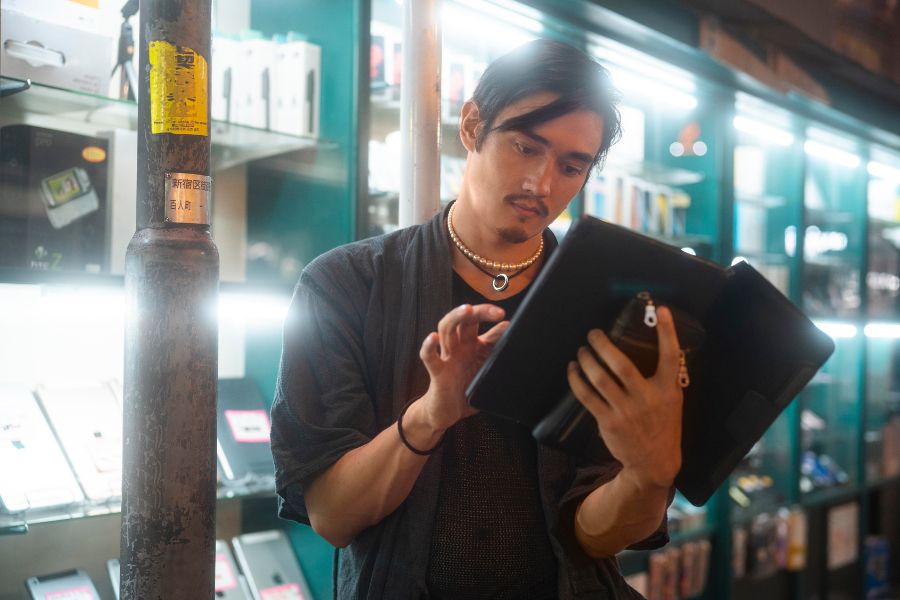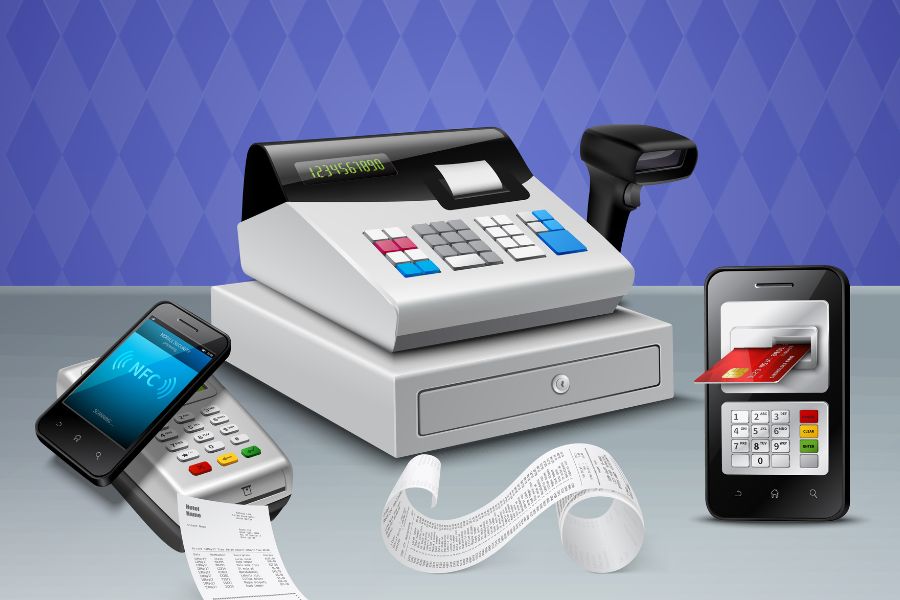The line between online and in-store shopping is disappearing as top brands master omnichannel retail with POS systems. With the connection of digital and physical experiences, companies like Nike, Amazon, create smooth shopping journeys that keep customers engaged and coming back. This article explores how leading brands use comprehensive strategies and omnichannel retail POS to improve convenience, personalize interactions, and simplify transactions. From AI-driven recommendations to frictionless checkout, these examples highlight the key innovations shaping modern retail.
Highlights:
- An omnichannel retail POS connects online and offline channels in real time, enabling seamless transactions, consistent inventory updates, and unified customer data across all touchpoints.
- Leading brands like Nike and Amazon show that success with omnichannel retail comes from using data to personalize experiences, maintaining inventory accuracy, and delivering consistent service everywhere customers shop.
What is omnichannel retail POS?
An omnichannel approach connects consumers across various platforms, while a multichannel model provides separate, independent ways for customers to interact with a retailer. In the US alone, multichannel e-commerce sales reached $575.6 billion in 2023, accounting for 52.2% of all online transactions.

The statistics from Think With Google show that retailers using omnichannel methods see 80% more store visits, demonstrating their role in attracting customers and increasing engagement.
In that landscape, a key component of this strategy is an omnichannel retail POS, which synchronizes online, in-store, mobile, social media, and marketplace transactions within a single platform. This integration allows shoppers to move effortlessly between channels, making browsing, purchasing, and returns more convenient while giving retailers real-time data for better decision-making.
Key benefits of an omnichannel POS system include:
- Real-time inventory management across all sales channels
- Consistent customer experience with unified data on preferences and purchase history
- Flexible order fulfillment (e.g., buy online, pick up in-store)
- Centralized reporting and analytics for better decision-making
While an omnichannel strategy engages consumers using multiple channels, a multichannel strategy gives consumers multiple single-channel options to engage with a retailer. Multichannel e-commerce sales totaled $575.6 billion in 2023 or 52.2% of all e-commerce.
Benefits of Omnichannel Retailing in POS
Omnichannel retailing isn’t just a trend—it’s a game-changer for modern businesses. By integrating digital and physical sales channels, retailers can create a seamless, data-driven shopping experience that maximizes customer satisfaction and business growth. Here’s why it matters:
- Expanded Customer Reach – Meet your customers wherever they shop—online, in-store, on social media, or via mobile apps. More channels mean more opportunities to connect and convert.
- Higher Profit Margins – A well-integrated POS system ensures better inventory management, reduced markdowns, and smarter pricing strategies, directly impacting your bottom line.
- Greater Customer Engagement – Shoppers today expect convenience and personalization. Omnichannel POS allows for personalized recommendations, flexible payment options, and smooth transitions between platforms, keeping customers engaged.
- Strengthened Client Loyalty – When customers can interact with your brand effortlessly across multiple channels, their trust and loyalty grow. Features like omnichannel rewards programs and personalized promotions encourage repeat business.
- Enhanced Brand Loyalty – A unified shopping experience fosters brand recognition and trust. Whether online or in-store, customers experience consistency, making them more likely to stick with your brand.
- Increased In-Store Traffic – Online browsing often leads to in-store visits, especially when retailers provide in-store pickup, exclusive discounts, or experiential retail opportunities.
- Improved Customer Data Insights – Every touchpoint generates valuable data. Omnichannel POS systems consolidate customer behavior, preferences, and purchasing patterns, enabling smarter marketing, inventory management, and customer service strategies.
Retail success today depends on agility, convenience, and personalization. Omnichannel retailing, powered by a robust omnichannel retail POS, gives businesses the competitive edge needed to thrive in an ever-evolving market.
Top Brands That Win Customer Loyalty Through Omnichannel Retail in POS Systems
Amazon
Amazon has redefined the retail experience by integrating technology-driven omnichannel retail POS that creates a smooth and engaging shopping journey. These innovations improve convenience, encourage repeat purchases, and build lasting customer relationships.
- Checkout-Free Shipping with Amazon Go: Amazon replaces checkout lines with Just Walk Out technology. Shoppers pick up what they need and leave. Payments are handled automatically through their Amazon accounts, cutting wait times and speeding up the shopping process.
- Mobile Transactions Across Devices: Customers can use the app, website, or physical store without breaking the shopping flow. All purchases stay connected across channels, keeping everything in sync.
- Voice-Activated Purchases with Alexa: With Alexa linked to the POS system, shoppers can use voice commands to place orders, reorder items they buy often, and check delivery updates. This hands-free approach makes shopping easier and more interactive.
- Personalized Checkout Suggestions: The POS system looks at past purchases to suggest items that match shopper preferences. These suggestions help customers discover things they might like and encourage them to return.
- Flexible Payment Options: The system works with various payment methods such as Amazon Pay, one-click checkout, and recurring purchases through subscriptions. This setup makes it easier for people to complete their orders the way they prefer.
- Prime Membership Connection: Amazon’s POS links directly to Prime benefits. Members can access special deals, faster shipping, and rewards that grow over time. This setup gives customers more reasons to keep shopping with Amazon.
ZARA
Zara’s omnichannel retail POS blends digital and physical touchpoints, allowing customers to move between them without complications. Whether browsing in-store, purchasing through the app, or picking up an order at a physical location, shoppers interact with a system designed for speed and convenience.
- RFID technology tracks inventory in real time: Zara applies Radio Frequency Identification to monitor stock across stores with precision. This supports store-based shipping for online orders, keeps product data up to date, and helps staff restock shelves quickly.
- Click and Collect adds shopping flexibility: Customers who buy online can pick up their items in-store, skipping delivery wait times while still enjoying the convenience of digital ordering.
- Returns are processed through POS: Shoppers can return online purchases in person, and the POS system handles the transaction. The process is quick and simple, helping both staff and customers.
- Mobile POS shortens the checkout process: Staff use handheld POS devices to complete transactions anywhere in the store. They can also check stock and suggest similar or related products based on past buying behavior.
- Stores act as digital showrooms: Shoppers can scan items using the Zara app, review details, and place orders. They may browse in person and then complete their purchase online. The system also suggests products based on what customers look at or buy.
- Zara’s POS system improves store performance: The setup supports better stock tracking, quicker service, more chances to sell across channels, and a smoother overall shopping experience.
Nike
Nike’s omnichannel retail POS supports a unified shopping experience across digital platforms and physical stores. Customers move effortlessly between online and offline interactions, ensuring a consistent brand experience whether they shop through mobile apps, websites, or flagship locations. The POS system keeps track of preferences, purchases, and loyalty rewards, allowing Nike to deliver tailored interactions at every stage.
- Mobile POS supports faster checkouts: Shoppers complete purchases anywhere on the store floor with handheld devices. This removes the need to line up at traditional counters and keeps the experience moving.
- Checkout includes personalized suggestions: Nike’s POS shows product ideas based on previous orders and what customers have viewed. provides and rewards show up automatically, making checkout more tailored to the individual.
- Nike Plus benefits apply in real time: Members receive early product access, special pricing, and points added directly during checkout. Their accounts link to the POS system, so rewards are applied without extra steps.
- Payment options suit different preferences: Shoppers pay using digital wallets, QR codes, or contactless cards. The POS also allows a mix of payment methods in one transaction if needed.
- Digital and in-store systems stay connected: Customers view stock availability online before visiting. They can pick up online orders in-store or request delivery. Store staff can see order details directly through the POS, helping them serve each customer better.
The Future of Omnichannel Retailing in POS
This growth of omnichannel retail POS is fueled by advancements in POS technology, evolving consumer expectations, and increased investment in retail infrastructure.
Key Trends Shaping the Future of POS
- AI-Driven Personalization: Retailers are integrating AI-powered POS systems to analyze customer preferences and purchasing history. These insights help businesses tailor product recommendations, refine pricing strategies, and improve loyalty programs, leading to higher conversion rates and stronger customer relationships.
- Augmented Reality (AR) and Virtual Reality (VR) in POS: AR and VR technologies are making their way into POS interfaces, allowing customers to preview products in real-world settings before finalizing purchases. Retailers are incorporating interactive digital displays at checkout points, enriching the in-store experience and bridging the gap between digital and physical retail.
- Growth of Click-and-Collect POS Integration: More businesses are linking POS systems with Click-and-Collect services, allowing customers to pay online and pick up purchases at a preferred location. This setup improves order fulfillment, boosts in-store traffic, and provides a flexible shopping alternative.
- IoT-Connected POS Systems: IoT enables real-time data synchronization in POS systems, allowing live inventory tracking, automated reordering, and smart checkouts with self-service kiosks and frictionless payments.
How Retail Businesses Can Utilize Omnichannel Retail POS ConnectPOS
ConnectPOS omnichannel retail POS helps retailers unify online and offline sales, creating a seamless shopping experience while improving efficiency.
- E-Commerce Integration: Customers can buy online and process refunds or exchanges in-store. Inventory updates automatically between digital and physical stores, ensuring stock accuracy. Multiple payment methods and tax calculations are fully supported.
- In-Store Experience: AI facial recognition identifies customers, allowing personalized service. Online products are available for in-store purchase, and real-time stock visibility across all locations ensures smooth operations.
- Mobile & On-the-Go Convenience: Sales associates can scan barcodes to access product details or place orders. The system detects nearby customers and sends personalized promotions via the PWA app.
- Social Commerce: Recognize customers across platforms and display targeted provides to drive engagement and conversions.
- Click-and-Collect Services: Customers can purchase online and pick up their items in-store effortlessly. Staff can quickly retrieve orders and verify details.
- Flexible Payment Options: Accept cash, credit/debit cards, gift cards, and support split payments or layaways for added convenience.
- Real-Time Inventory Updates: With omnichannel POS from ConnectPOS, stock levels adjust instantly across all platforms, preventing overselling or stockouts.
- Mobile Shopping and Self-Checkout: Customers can scan barcodes, receive notifications about new arrivals and promotions, and complete transactions independently via mobile devices.
FAQs: Omnichannel Retail POS
How do top brands use omnichannel retail with omnichannel retail POS?
Leading brands like Nike, Amazon, and Starbucks Customer Loyalty integrate online and offline sales through seamless POS systems. They provide features like real-time inventory updates, personalized marketing, and frictionless checkout experiences.
What makes Nike a leader in omnichannel retail?
Nike’s “Nike App at Retail” connects online shopping with in-store experiences. Customers can reserve items, access exclusive deals, and enjoy a personalized shopping journey through AI-driven recommendations.
How does Amazon leverage omnichannel strategies?
Amazon’s Just Walk Out technology and Amazon Go stores eliminate checkout lines, allowing customers to grab items and leave while their purchases are automatically processed through a connected POS system.
Conclusion
The success of leading brands in the world demonstrates how omnichannel retail POS creates smooth shopping experiences, increases customer engagement, and drives sales.
Retailers looking to stay competitive should see these examples as inspiration to refine their omnichannel strategies. A well-executed approach leads to higher customer satisfaction, increased revenue, and greater operational efficiency. Investing in the right technology and prioritizing customer-centric experiences will be key to success.
Ready to elevate your omnichannel strategy? ConnectPOS empowers businesses with cutting-edge POS solutions to unify online and offline sales. Contact us today to see how ConnectPOS can transform your retail experience!



